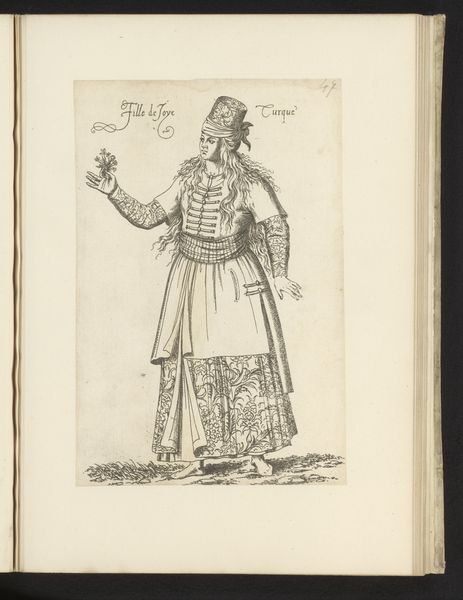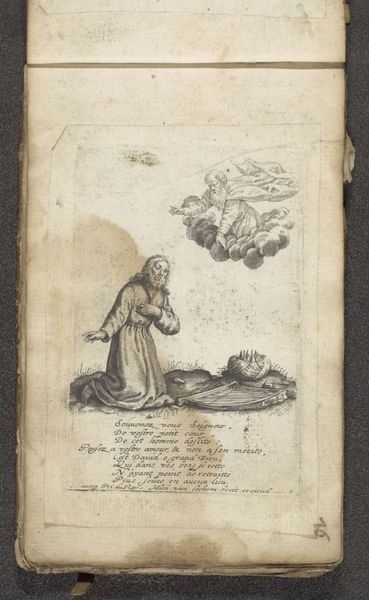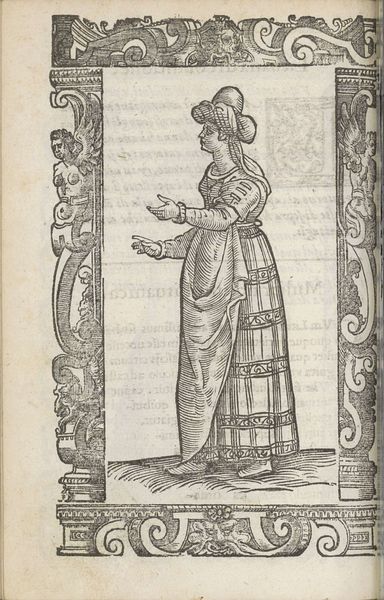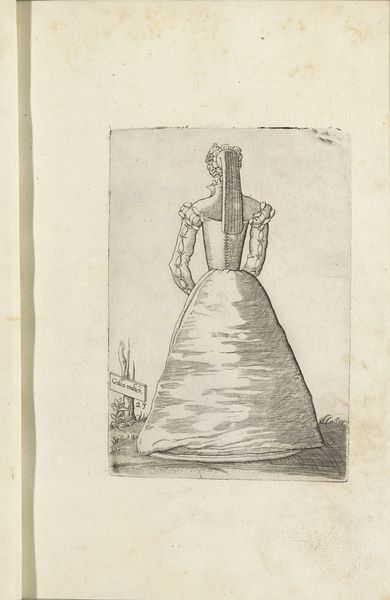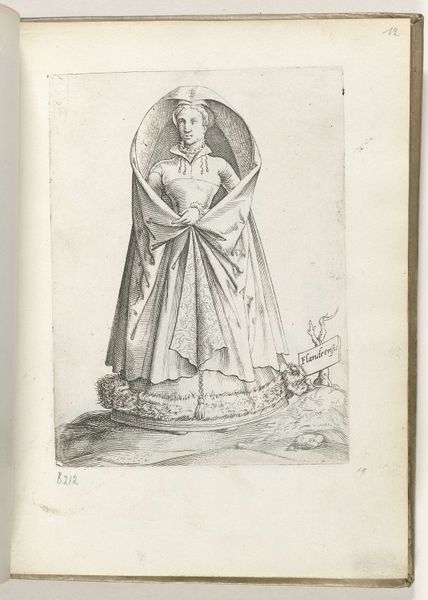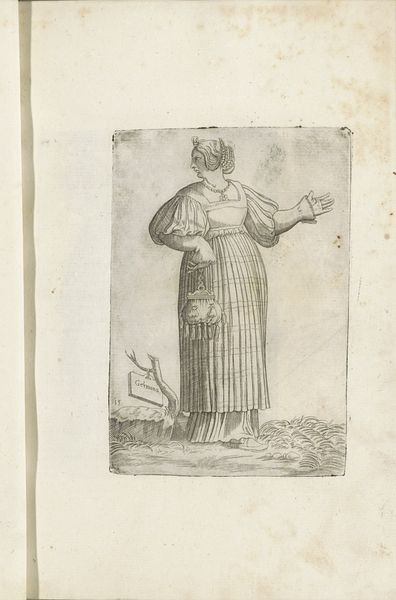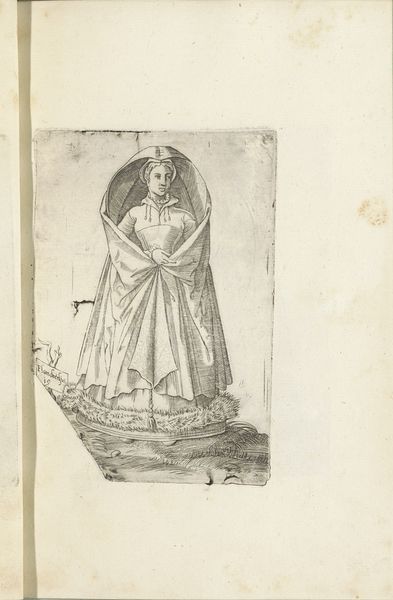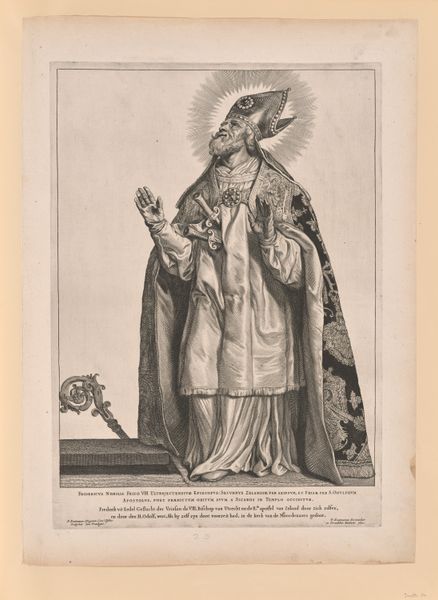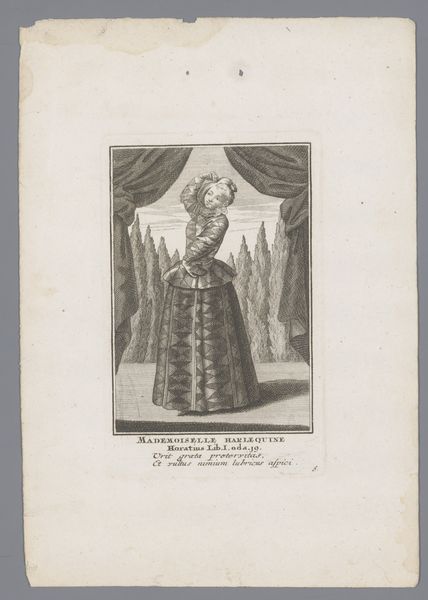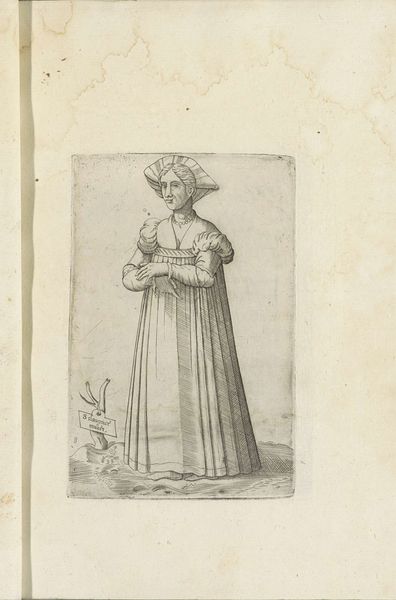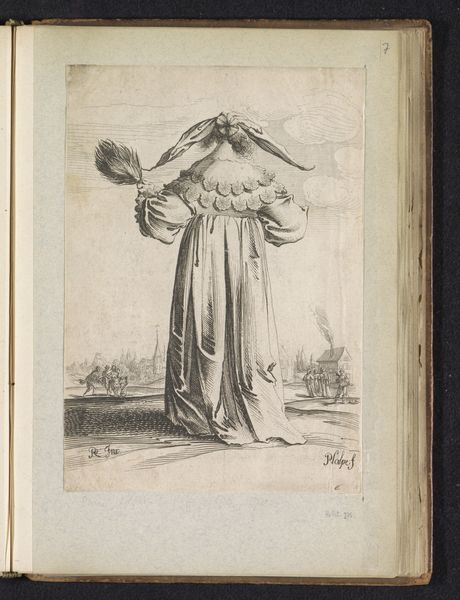
drawing, paper, ink, engraving
#
drawing
#
baroque
#
landscape
#
figuration
#
paper
#
ink
#
coloured pencil
#
history-painting
#
engraving
Dimensions: height 103 mm, width 71 mm
Copyright: Rijks Museum: Open Domain
This print, “David geraakt door een vloedgolf,” was made around the mid-17th century by Michel van Lochom, using engraving – a process of incising lines into a metal plate, which is then inked and printed. It’s a prime example of reproductive printmaking, a crucial technology in early modern Europe. Engraving was painstaking, requiring great skill. The engraver would have used specialized tools to create the fine lines you see here, building up tones and textures through careful manipulation. This print is small, but the level of detail speaks to the engraver's mastery and long hours of labor. Prints like this circulated widely, disseminating images and ideas. They allowed people to own artworks at a fraction of the cost of a painting, making art more accessible. But it also meant that artists like van Lochom were often working to reproduce the designs of others, within a growing system of cultural production. The print sits at the intersection of craft, commerce, and artistic expression. It encourages us to look beyond the image itself and consider the social and economic context of its creation.
Comments
No comments
Be the first to comment and join the conversation on the ultimate creative platform.


